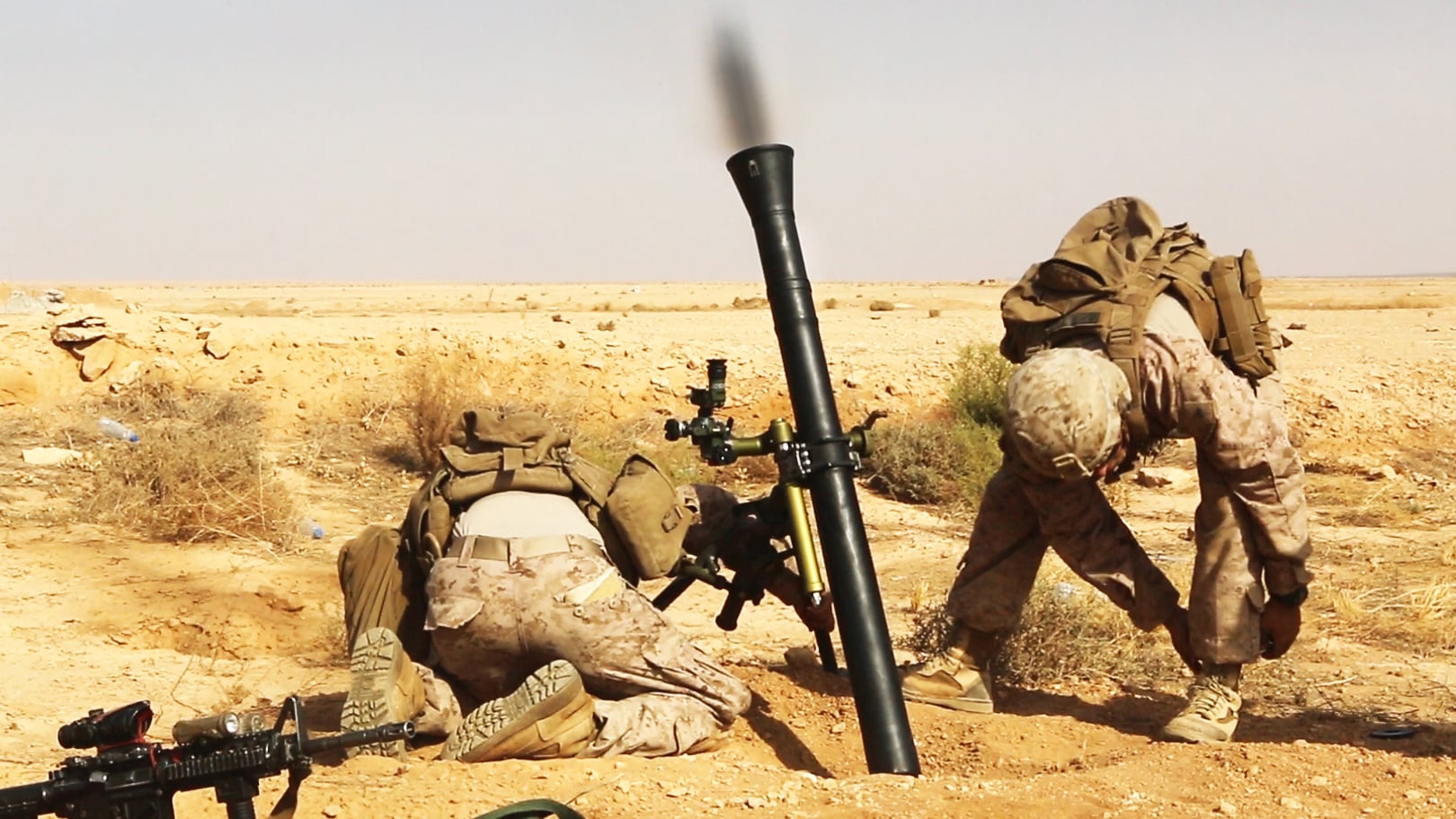The fight against the Islamic State group is far from over in Iraq's Anbar province.
The extremist group still controls the Euphrates River Valley west of Haditha up to the Syrian border. Almost every day the American-led coalition's airstrikes hit Islamic State targets in Ramadi, the provincial capital. And the ongoing fight is now prompting the U.S. military to boost capacity at western Iraq's primary airfield, al Asad Air Base.
The U.S. military disclosed this week plans to send more U.S. troops to al Asad and to install an "instrument landing system" that will for the first time in years allow for 24-hour flight operations. The system's radio signals allow pilots to land in poor-visibility conditions, such as nighttime or bad weather.
"The capabilities that are being brought in there now are going to make sure that we have the ability to keep the lid on the [Islamic State group's] presence there," said Air Force Col. John Dorrian, a top spokesman for Operation Inherent Resolve, the American-led mission in Iraq and Syria.
"Having that capability there allows us to get better intelligence insight into what the enemy is doing, it allows us to conduct strikes and it allows us to keep Daesh disrupted along the Euphrates River Valley," he said, using an Arabic term for the Islamic State, also known as ISIS or ISIL.
Dorrian declined to say how many U.S. troops are currently deployed to al Asad, noting only that it was less than 2,000. The U.S. is flying drones from al Asad and the air base will be the destination for many of the additional 615 American troops that will deploy to Iraq in the coming weeks. Defense Secretary Ash Carter announced the additional deployments on Wednesday.
The Ramadi area has borne the brunt of the ISIS attacks. For example, near Ramadi, the U.S. reported 98 airstrikes during the three-month period ending on Sept. 30. Targets included a "headquarters building," boats, vehicle-borne improvised explosive devices, tactical units, tactical vehicles, fighting positions, rocket systems, artillery pieces, sniper positions, heavy machine guns and weapons and supply caches, according to the daily reports from U.S. military officials.
Much of the continued ISIS presence in Anbar has received little public attention. After the Iraqis’ declared Ramadi to be "clear" of ISIS in February and after the militants were routed from Fallujah in June, U.S. and Iraqi attention shifted to the north and the Islamic State’s stronghold in Mosul, the target of a massive invasion slated for October.
Yet the enduring fight in Anbar province highlights ISIS's resiliency and the challenges that Iraq will face in securing areas after they are initially cleared with help from the U.S. military.
"What we've continued to do is to provide a lot of airstrikes and disrupt them. We're not gonna wait for them to try to disrupt the Iraqi security forces or us," Dorrian said.

Marines fire a M252A2 81 mm mortar system during a live-fire training mission at Al Asad Air Base, Iraq, Oct. 24, 2015.
Photo Credit: Sgt. Owen Kimbrel/Marine Corps
The build-up at al Asad offers a look at the next phase of the campaign against the Islamic State. The airfield's strategic location in western Iraq is adjacent to ISIS territory in Syria and the upper Euphrates Valley, which includes oil-rich Deir Ezzor and ISIS’s self-proclaimed capital in Raqqah.
Dorian said the part of the Euphrates River Valley near Baghdad is "secure," including Fallujah, Ramadi. But U.S. and Iraqi control is limited beyond Haditha.
"Once you get further out, out toward the Syrian border to Haditha and beyond, this is really where Daesh has a significant presence," Dorian said.
"We still see significant Daesh presence out in the periphery. These are less populated areas and certainly less desirable areas for Daesh, but it is also a place where they continue to try to reconstitute, and make trouble in order to try to deflect attention away from higher priorities like Mosul."
After the 2003 U.S. invasion, al Asad became one of the largest American air bases in Iraq. It was known among Marines as "Camp Cupcake" because of its amenities that included fitness centers and high-quality dining facilities.
Since the return of U.S. forces to Iraq in 2014, al Asad has been the site of American-led training efforts for the Iraqi security forces. There, the U.S. military also maintains an M142 High Mobility Artillery Rocket System
, or HIMARS, which can deliver long-range precision strikes.
The air base is secure and does not abut any major cities. In March, a
group of ISIS suicide bombers got inside the installation and killed three Iraqi soldiers. No Americans were injured in that attack.
Andrew Tilghman is the executive editor for Military Times. He is a former Military Times Pentagon reporter and served as a Middle East correspondent for the Stars and Stripes. Before covering the military, he worked as a reporter for the Houston Chronicle in Texas, the Albany Times Union in New York and The Associated Press in Milwaukee.




